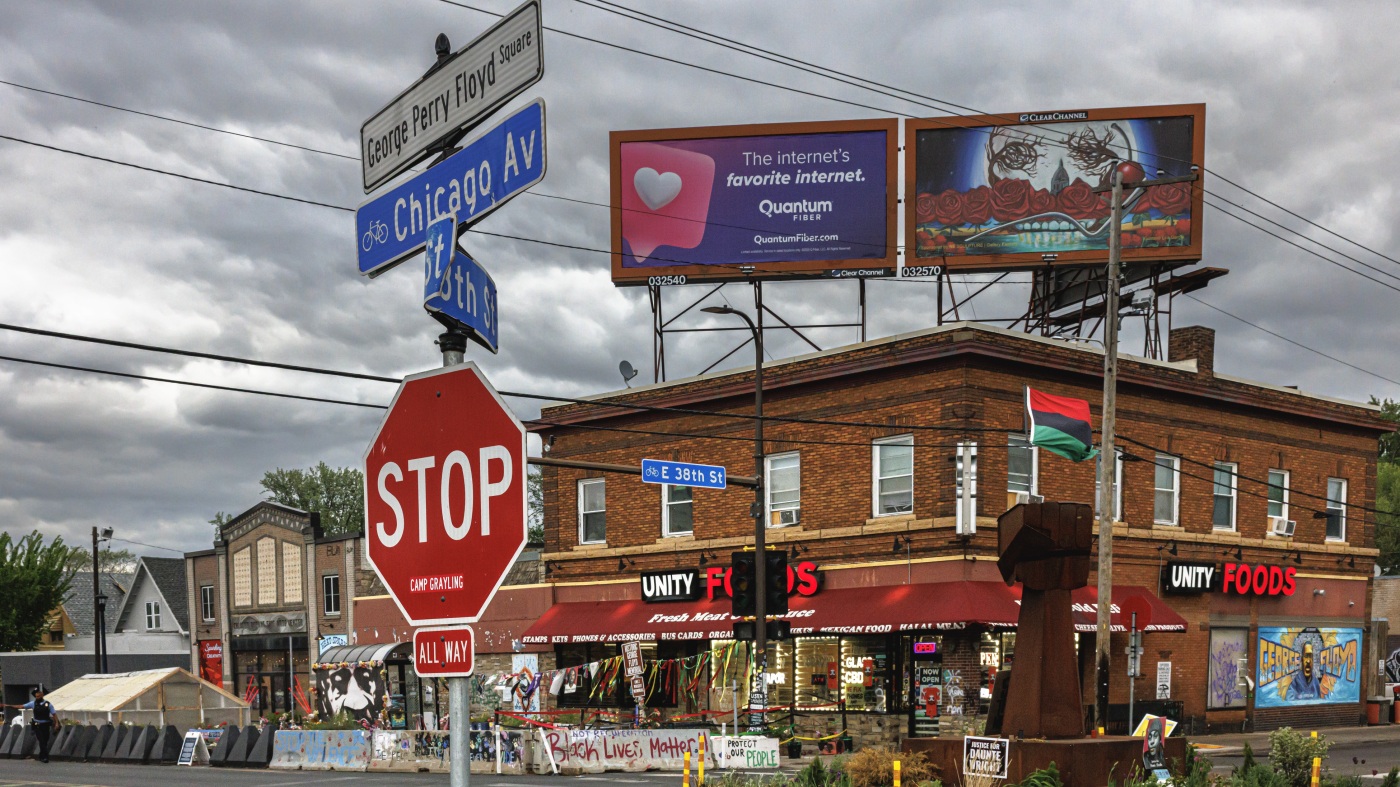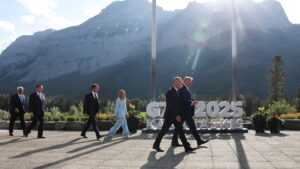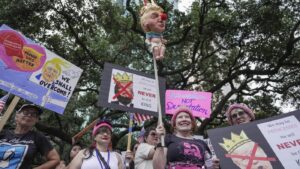The Intersection of Memory and Change: George Floyd Square
On a brisk morning at the intersection of 38th Street and Chicago Avenue in South Minneapolis, a group of activists gather around a fire pit, stationed between the barren pumps of an old gas station. This place has been a hub of activity since the murder of George Floyd across the street five years ago, and the group claims to have met here every morning since.
“It started in the early days when thousands filled the streets,” says Star Martin, a local community member. “We were just checking in. ‘How is everybody? Who needs help?’ And we just kept doing it.”
For these activists, this daily meeting is a form of ongoing protest—a way to resist long after the global uproar faded.
“We can’t go back to business as usual.”
Jeanelle Austin, the leader of the racial justice group Rise and Remember, is focused on preserving the memorial at George Floyd Square. Some of Floyd’s family are involved in the organization.
Inside a warm greenhouse near where Floyd died, Austin tends to a cluster of mums. “I think my favorite moment with the greenhouse—it must have been winter, the first year we had the greenhouse—and this little girl walks in and she takes a big sniff and she goes, it smells like spring,” Austin recalls.
Activists, many of whom are gardeners, work to keep these plants alive during harsh Minnesota winters, an act they see as a form of protest. “We practice preservation as protest. It is this idea that as we preserve our story, as we choose to never forget what happened, it helps us understand how to move forward,” explains Austin, who grew up nearby.
Struggles for the businesses that remain
The murder of Floyd marked an end to normalcy for local businesses. Protests erupted nationwide, and in Minneapolis, hundreds of buildings were damaged or destroyed, including the police station where Derek Chauvin worked.
At the intersection of 38th and Chicago, community members erected barricades to prevent traffic. “Those initial days, this became a gathering place and a sacred place,” says Victoria Lauing, co-founder of the Chicago Avenue Fire Arts Center, where the steel fist in the square was created.
The barricades remained, transforming the area into an autonomous zone. Residents noted a lack of police and emergency services, leading to a complex mix of safety and volatility.
A corner “stuck in a rut”
Marquise Bowie, a neighborhood native, frequently engages with visitors to the square, sometimes leading tours. Most visitors come to pay their respects, but Bowie questions the need to visit the site of a murder. “If we’re only going somewhere to feel sad about a Black man getting killed, but we’re not doing anything to try to fix some of the issues, I don’t see that being a good thing, especially five years later,” he says.
For Bowie, progress would mean a thriving neighborhood with successful businesses, employment, and housing.
A pedestrian mall versus an open street
Minneapolis Mayor Jacob Frey acknowledges the frustrations of business owners. “We all agree this should be a critical spot, not just for that community, but worldwide, for racial healing and justice. And we’ve got to take the next step here,” he says.
The city’s investment of over $2 million in community outreach led to a survey, where most respondents favored full transportation access around the intersection. Despite Mayor Frey’s recommendation for an open street, the city council considered a pedestrian mall instead. Council member Jason Chavez emphasized the importance of reflecting residents’ voices.
Residents finding their own ways forward
Russ Wigginton, leading the National Civil Rights Museum at the Lorraine Motel where Martin Luther King Jr. was assassinated, notes that healing takes time. “The messiness of these situations are a reflection of the messiness of humanity. We should not expect this to be something other than who we are and how we are,” he says.
In Minneapolis, the community is finding ways to move forward. Bowie holds creative writing classes, while Austin organizes exhibits to showcase protest artwork at the memorial. Ace Rice, who opened the PLOT gallery at the square, sees thriving Black-owned businesses as a path to combat systemic disparities.
Every Monday night, a group of musicians known as Brass Solidarity gathers to play, bringing both a message of protest and joy to the community. “We know that there are organizers and leaders and business owners who wish we would go away,” says Butchy Austin, one of the group’s leaders. “But we also see those same people patting their feet and shaking their behind to the tunes that we play, because music does that.”
This article was originally written by www.npr.org






